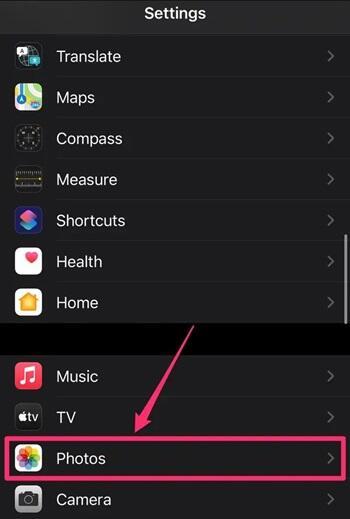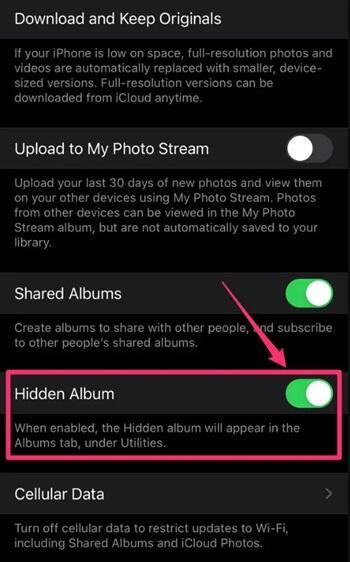Contents
Introduction
In an era where our digital footprint is as significant as our physical presence, the sanctity of personal privacy has never been more paramount. With iPhones being an integral part of our daily lives, they become repositories of our personal memories and moments, captured in photos and videos. These snapshots, while seemingly trivial, are fragments of our personal stories, deserving protection and discretion. As we navigate through the complexities of the digital age, understanding how to safeguard these digital treasures on our iPhones is not just a feature but a necessity. This article delves into the art of hiding photos on your iPhone, ensuring that your private moments remain just that—private.

Understanding iPhone’s Privacy Features
iPhones are equipped with a variety of privacy features, especially when it comes to managing photos and media. These features are designed to give users control over their personal data and protect their privacy:
- Photo Album Locking: Allows users to add an extra layer of security to their personal albums.
- Hidden Photo Album: A dedicated space where users can store private photos away from the main album.
- App Permissions: Users have the ability to control which apps have access to their photos.
- iCloud Security: Photos uploaded to iCloud are protected with end-to-end encryption.
- Face ID and Touch ID: These biometric features ensure that only the user can access their private photos.
Why Privacy Matters for iPhone Users
In today’s interconnected world, privacy on devices like the iPhone is more than a luxury; it’s a necessity. For iPhone users, privacy means keeping personal information, from contacts to photos, secure from unauthorized access. It’s about protecting one’s digital identity and maintaining control over personal data. In the case of photos, which often hold sentimental value and personal information, safeguarding them ensures that personal moments and memories are not exposed to risks such as data breaches or unwanted sharing.

Apple’s Approach to Privacy
Apple has consistently positioned itself as a champion of user privacy. This commitment is evident in the design of their devices and software, including the iPhone. Apple’s approach to privacy is multifaceted, focusing on minimizing data collection, enhancing user control, and implementing robust encryption methods. Features like app tracking transparency, minimal data retention, and strong encryption protocols for data storage and transfer underscore Apple’s dedication to protecting user privacy. For iPhone users, this translates into a trusted environment where personal photos and information are securely stored.
Step-by-Step Guide: Hiding Photos on iPhone
Hiding photos on your iPhone is a straightforward process. Here’s a step-by-step guide to help you keep your personal photos private:
- Open the Photos App: Start by launching the Photos app on your iPhone. This app houses all your media, including photos and videos.
- Select the Photo(s) to Hide: Browse through your photos and select the ones you wish to hide. You can select multiple photos by tapping and holding one photo and then tapping others.
- Hide the Selected Photos: After selecting the photos, tap the share icon (a square with an upward arrow) at the bottom left of the screen. In the share menu, scroll down and find the option labeled “Hide”. Tap on it.
- Confirm the Action: A prompt will appear, asking you to confirm that you want to hide the selected photos. Confirm by tapping “Hide Photo”.
- Check the Hidden Album: The hidden photos will move to a special album named ‘Hidden’, which you can find in the Albums tab of the Photos app.

Accessing Your Photo Library
To access your photo library on your iPhone:
- Launch Photos App: Tap on the Photos app icon on your home screen or app library.
- Navigate to Albums: At the bottom of the screen, you’ll see a navigation bar. Tap on the “Albums” tab to view all your photo albums.
- Browse Through Albums: Here, you can scroll through and access various albums, including the ‘Hidden’ album, where your hidden photos are stored.
Selecting and Hiding Photos
The process of selecting and hiding photos on your iPhone involves:
- Locate the Photo: Open the Photos app and find the photo you want to hide. You can do this in your camera roll or in any album.
- Select the Photo: Tap on the photo to select it. For multiple photos, tap “Select” in the top right corner and then tap each photo you want to hide.
- Hide the Photo: With the photo(s) selected, tap the share icon, then scroll down and select “Hide”. Confirm your choice to move the photo(s) to the Hidden album.

Additional Privacy Tips for iPhone Photos
Enhancing the privacy of your photos on an iPhone goes beyond just hiding them. Here are some additional tips to secure your photos:
- Regularly Update Your iOS: Keep your iPhone’s operating system up to date to ensure you have the latest security features.
- Manage App Permissions: Regularly review which apps have access to your photos and adjust permissions as necessary.
- Enable Two-Factor Authentication: This adds an extra layer of security to your Apple ID, protecting your iCloud photos.
- Use Secure Wi-Fi Connections: When accessing or uploading photos, ensure you are on a secure Wi-Fi network to prevent unauthorized access.
- Disable iCloud Photo Sharing: If you’re concerned about privacy, consider turning off iCloud Photo Sharing to keep your photos stored locally on your device.
Using Passwords and Biometrics
Passwords and biometrics play a crucial role in securing your iPhone photos. Using a strong, unique passcode for your iPhone is the first line of defense. Additionally, enabling Touch ID or Face ID provides a biometric layer of security, ensuring only you can access your device and the photos within it. These security measures are essential not just for protecting access to the phone but also for safeguarding the privacy of the contents inside, including your hidden photos.

Third-Party Apps for Enhanced Privacy
While the iPhone’s built-in features offer substantial privacy options, third-party apps can provide additional layers of security for your photos:
- Photo Vault Apps: Apps like KeepSafe and Photo Vault offer encrypted storage for your photos, often with additional features like break-in alerts.
- Secure Cloud Storage Apps: Consider apps like pCloud or Tresorit, which provide encrypted cloud storage for your photos.
- Encryption Apps: Apps like Signal or Telegram offer end-to-end encryption for sending and receiving photos securely.
Conclusion
In the digital world we inhabit, where our personal and professional lives often intersect on our devices, the significance of privacy cannot be overstated. The iPhone, a constant companion for many, holds not just our communications but also our personal memories in the form of photos. The ability to hide these photos easily is not just a feature—it’s a fundamental aspect of digital privacy and security. This article has walked you through the simple yet effective steps to ensure your private moments remain just that, coupled with additional strategies to fortify your photo privacy.
Remember, taking these steps isn’t just about hiding photos; it’s about embracing a culture of privacy and security in our daily digital interactions. By regularly utilizing these features and practices, you are not only protecting your personal information but also setting a standard for how we respect our digital space. So, go ahead, take control of your digital footprint on your iPhone, and navigate the digital world with confidence and peace of mind.